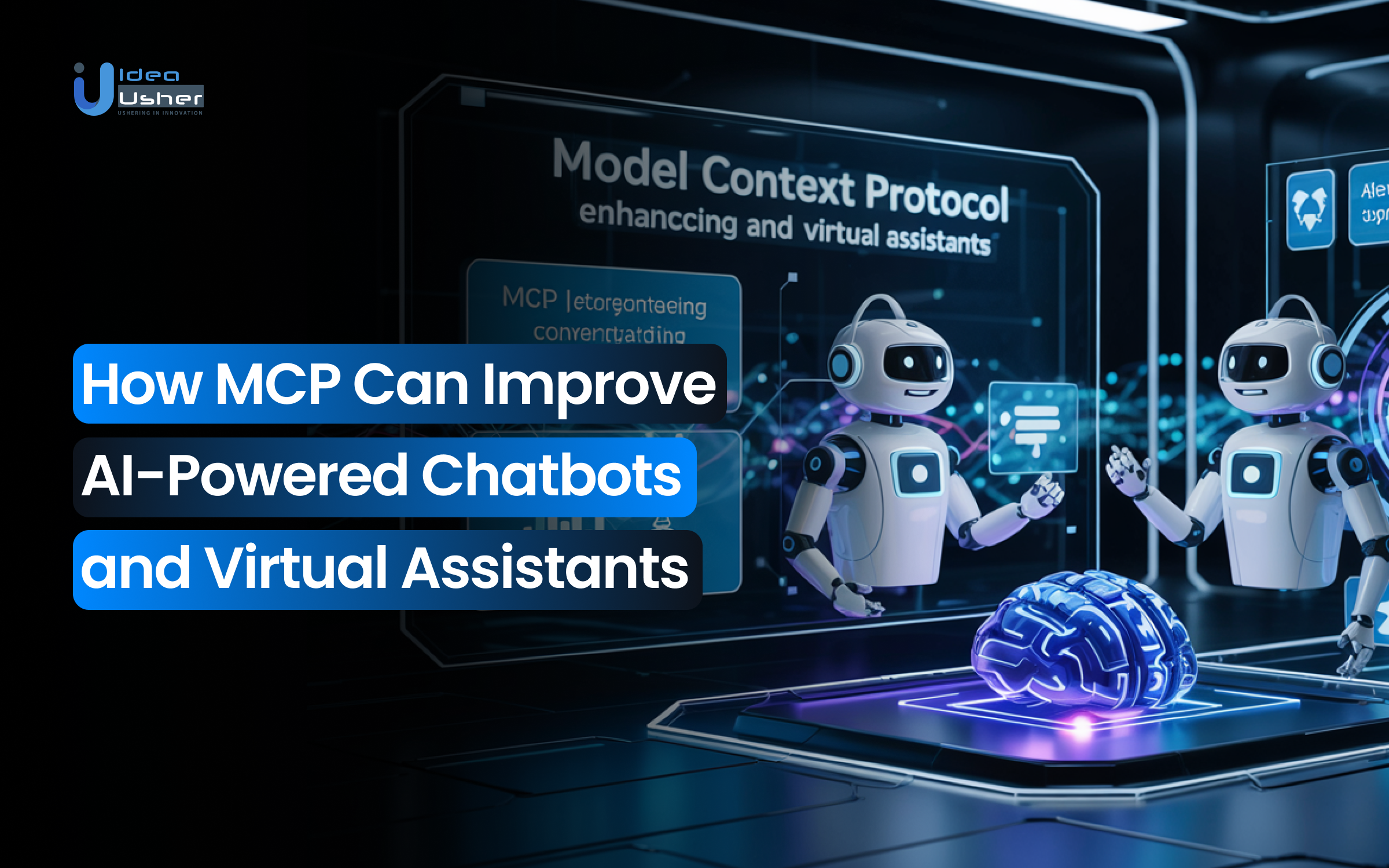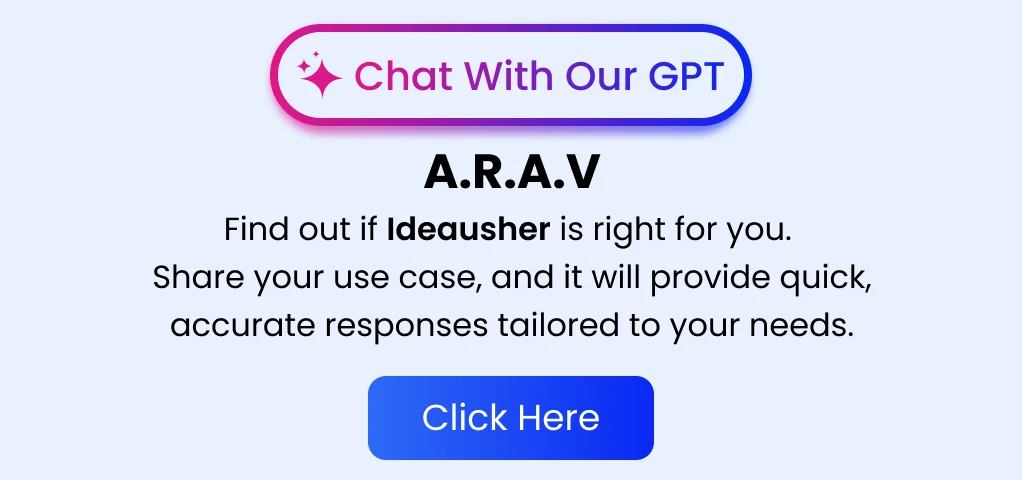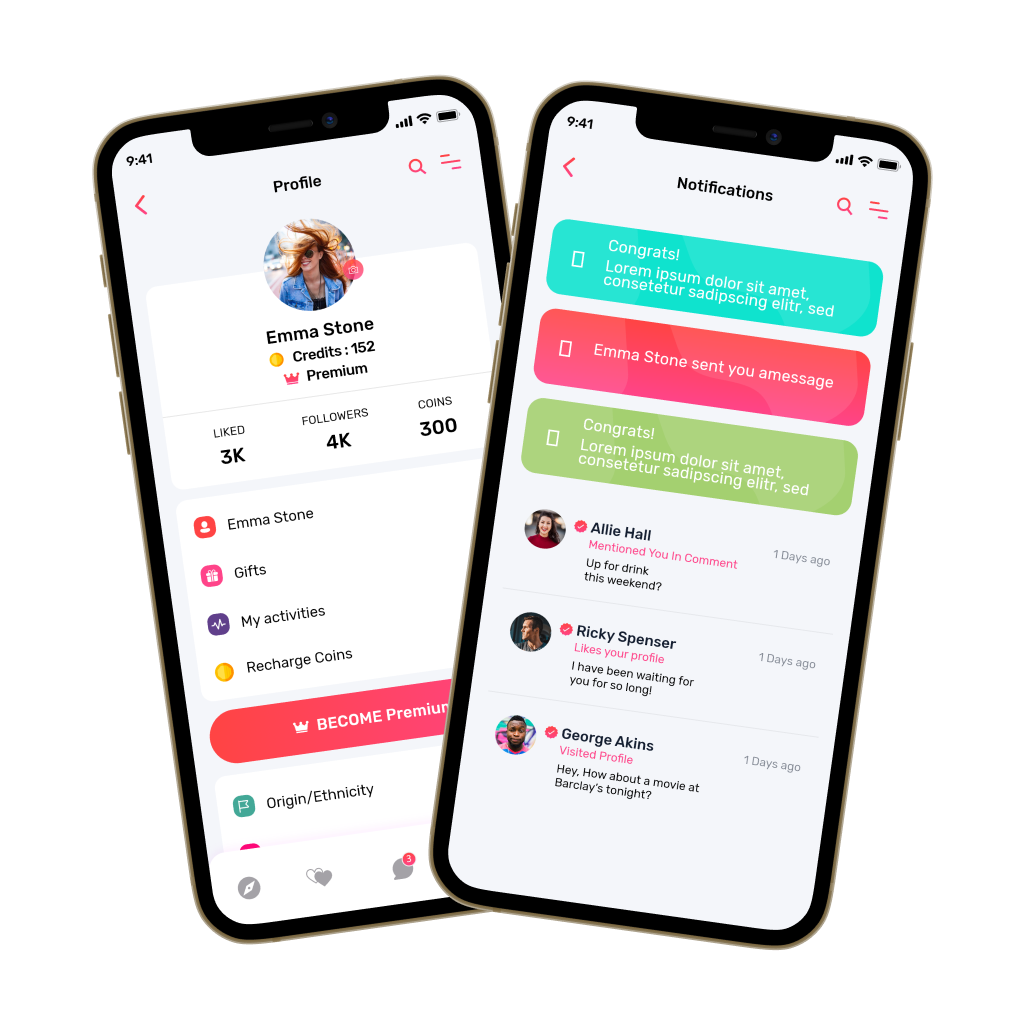AI-powered chatbots and virtual assistants are changing the way businesses engage with customers, but keeping them smart, responsive, and scalable is crucial for success. That’s where Model Context Protocols come in. They help AI systems seamlessly integrate with external tools and data sources, allowing chatbots and virtual assistants to adapt to different situations and provide more accurate, personalized responses.
By using MCP, businesses can make their chatbots and virtual assistants more intuitive so they better understand context and deliver responses tailored to individual needs. This leads to happier customers, reduced costs, and ultimately, a more profitable AI solution for your business.
In this blog, we’ll explore how Model Context Protocols can enhance AI-powered chatbots and virtual assistants, improving user interactions and boosting business profitability.
Key Market Takeaways for AI Chatbots
According to MarketResearchFuture, the AI chatbot market is booming and is expected to grow from USD 8.98 billion in 2025 to a massive USD 103.84 billion by 2034, with an impressive annual growth rate of 31.24%. More businesses are turning to AI chatbots because they offer 24/7 customer support, cut down on operational costs, and improve service quality.
Source: MarketResearchFuture
With NLP, these chatbots can engage in human-like conversations, tackle complex queries, and even offer multilingual support. Advances in generative AI are also allowing chatbots to personalize interactions, which helps build customer loyalty and satisfaction.
The introduction of the MCP is taking this even further. MCP enables chatbots to integrate smoothly with external data sources like Google Drive, Slack, and GitHub, allowing them to pull in real-time information and handle more complex tasks.
For instance, Anthropic demonstrated how MCP-powered chatbots could create and store HTML pages directly in GitHub repositories. This integration helps reduce errors, improve reliability, and provide accurate responses by connecting AI systems to trusted data sources.
Work with Ex-MAANG developers to build next-gen apps schedule your consultation now
The Problem with Today’s Chatbots
Chatbots were created to make our lives easier, providing quick answers, instant support, and seamless interactions. But let’s face it, for many users, the experience feels anything but smooth.
Despite advances in technology, current chatbots often fail to meet user expectations, especially when it comes to empathy and efficiency. Here’s a closer look at the pain points users face today:
Repetitive Queries
There’s nothing more frustrating than a chatbot that loops back to the same question over and over as if it’s ignoring what you’ve already said. Around 73% of users abandon chatbots after encountering repetitive queries.
Lack of Personalization
Users expect a more personalized experience, but instead, they often get robotic, one-size-fits-all replies. This lack of adaptation makes interactions feel impersonal and robotic. Disengaged users, missed sales opportunities, and poor brand perception. People want to feel seen and understood, not like they’re just another ticket in the system.
Multi-Turn Breakdowns
One of the most jarring issues is when a chatbot “forgets” the context of a conversation mid-interaction, forcing the user to repeat steps and provide the same information again.
Here’s an example:
User: “I need help with my flight booking.”
Chatbot: “Sure! What’s your booking reference?”
User: “ABX123”
Chatbot: “Got it! Now, what’s your issue?”
User: “I want to change the date.”
Chatbot: “First, I’ll need your booking reference.” (Starts over)
This scenario frustrates users, who expect a seamless conversation where the bot remembers the necessary context and continues helping without starting from scratch.
How Can Model Content Protocols Solve These Issues?
Here’s how MCPs can solve these pain points,
1. Context Chaining
Traditional chatbots treat each new question as if it’s the first one, which means you have to repeat yourself every time you talk to them.
MCP Solution: It links past conversations to the current one, even if they happened weeks ago, so the chatbot can pick up where you left off.
Example:
- User (Session 1): “What’s the process to apply for a business loan?”
- User (Session 2): “What documents do I need?”
- MCP-Powered Bot: “As per your loan query last week, you’ll need 3 months of bank statements, ID proof, and…”
This way, the bot remembers what you’ve asked before, making it feel more like an ongoing conversation rather than starting fresh each time.
2. Cross-Session Memory
Many chatbots forget everything after each session, which means they lose context and can’t offer relevant follow-up or personalized experiences.
MCP Solution: It securely stores important details like your preferences, transaction history, and even your intent across different sessions, so the bot can pick up on this the next time you interact.
For example, an e-commerce bot can remember your preferred clothing size, favorite brands, and past purchases to suggest items you’ll actually love..
3. Adaptive Learning
Traditional chatbots follow static rules and don’t learn from past mistakes, so they often provide the same, less-than-helpful answers.
MCP Solution: It continuously improves by analyzing past interactions and adjusting its responses to be more relevant. For example, If users frequently ask “Can you clarify?” after certain responses, MCP will identify those responses and tweak them to be clearer in the future.
MCP vs. Traditional Chatbots: A Quick Comparison
| Feature | Traditional Chatbots | MCP-Powered Chatbots |
| Memory | Short-term (resets after session) | Long-term (retains context for weeks/months) |
| Personalization | Static scripts (e.g., “Hello, how can I help?”) | Dynamic & user-aware (e.g., “Welcome back, John! Still interested in SaaS tools?”) |
| Scalability | Limited by manual updates | Self-improving (learns from real-world usage) |
Why Businesses Love MCPs?
- Lightweight Integration: You can easily integrate MCP with popular platforms like Dialogflow, Rasa, or custom LLMs using APIs/SDKs.
- Privacy-First: MCP is built with encryption, GDPR/CCPA compliance, and optional on-prem deployment, making it privacy-friendly.
- No More “Memory Leaks”: Unlike traditional session-based systems, MCP ensures the context stays intact without needing manual fixes or constant updates.
Techniques Used in MCP for Better Content Retention
MCP uses innovative techniques to help AI models manage long-context retention more effectively. These methods boost memory recall, improve processing efficiency, and ensure the AI stays contextually accurate during extended interactions.
1. Hierarchical Context Chunking for Improved Recall
MCP organizes information into smaller, logical segments or chunks, rather than processing it all at once. This approach reduces data overload, helping AI retain important details during longer conversations or tasks. By breaking down inputs into manageable units, MCP boosts the model’s recall accuracy and overall response quality.
How It Works: Chunking divides lengthy inputs into smaller, focused pieces, allowing the model to concentrate on the key details without redundancy.
Benefits:
- Better long-term memory retention
- Reduced computational strain
- Improved processing efficiency
For instance, Legal AI systems use hierarchical chunking to analyze long legal documents, providing accurate responses while maintaining the context throughout the document.
2. Adaptive Context Window Expansion for Better Responses
MCP adjusts the memory window size based on the complexity of the conversation. This allows AI to focus on the most relevant context while ensuring it uses computational resources efficiently.
How It Works: The memory window expands or contracts depending on the scope of the interaction, ensuring the model only focuses on critical details without overloading its memory.
Benefits:
- More personalized responses
- Optimized resource usage
- Prevention of memory overload
For example, Customer support chatbots use adaptive context windows to keep track of the conversation history, making their responses more coherent and improving user satisfaction.
3. Retrieval-Augmented Generation for Knowledge Retention
MCP enhances AI models by integrating RAG, which allows the model to pull real-time, external data during conversations. This ensures the AI has up-to-date information, helping it stay relevant even during long-context interactions.
How It Works: RAG pulls in missing or outdated information from external databases, keeping the AI’s knowledge base fresh and complete.
Benefits:
- Maintains contextual awareness
- Avoids outdated responses
- Ensures accurate recall in long conversations
For example, Research-focused AI platforms use RAG to fetch the latest industry data, providing accurate, up-to-date insights during long discussions or analysis.
MCP vs. Other Long-Context AI Techniques: Why MCP Leads the Future
AI chatbots often struggle with long-context retention. While methods like Transformers, MANNs, and LSTMs help, they face scalability and efficiency issues. MCP, however, improves memory management, adapts better, and retains context longer, making it ideal for businesses using AI-driven interactions.
1. Transformers vs. MCP: Overcoming Token Limits & Computational Overhead
Transformers, like GPT-4, face challenges with fixed context windows, which limit the amount of past interactions they can remember, often leading to truncated data. Their self-attention mechanisms also become inefficient as sequence lengths grow, increasing computational costs. Additionally, irrelevant past data consumes valuable tokens, reducing overall efficiency.
How MCP Solves These Challenges
- Dynamic Context Prioritization: MCP ensures only the most relevant past interactions are retained, optimizing token usage.
- Hierarchical Memory Caching: Long-term context is stored in layers that are easy to retrieve, reducing the computational load.
- Cost-Efficient Scaling: Handles extended conversations without overloading resources.
2. MANNs vs. MCP: Balancing Power & Practicality
MANNs face several challenges, including high training complexity that requires fine-tuning to prevent memory issues. Their external memory access introduces latency, slowing down real-time interactions. Additionally, MANNs have high overhead, making them difficult to deploy at scale due to heavy RAM and GPU demands.
Why MCP Outperforms MANNs
- Lightweight Memory Management: MCP allocates resources based on the conversation’s importance, making it more efficient.
- Real-Time Retrieval: Provides near-instant access to past interactions without slowdowns.
- Plug-and-Play Integration: Easily integrates with existing systems like GPT-4 and RAG architectures.
3. LSTMs vs. MCP: Ending the Vanishing Gradient Problem
LSTMs struggle with long conversations due to short-term memory bias, where older inputs are gradually “forgotten” because of vanishing gradients. Their step-by-step processing also causes delays in response times, and they lack cross-session retention, resetting memory after each interaction, which limits their ability to handle ongoing conversations effectively.
MCP’s Superior Approach
- Persistent Context Storage: MCP maintains user history across sessions through secure databases.
- Adaptive Recall: Uses reinforcement learning to focus on important long-term patterns.
- Non-Linear Retrieval: Directly accesses critical past interactions, bypassing the need to re-process entire conversations.
Why MCP is the Best Choice for Long-Context AI?
| Feature | Transformers | MANNs | LSTMs | MCP |
| Context Retention | Limited by tokens | High but slow | Short-term | Long-term + Adaptive |
| Speed | Slows with length | Retrieval lags | Sequential delay | Real-time |
| Scalability | Cost-prohibitive | Hardware-heavy | Poor at scale | Efficient & Scalable |
| Deployment Ease | Complex | Research-heavy | Outdated | Plug-and-Play |
Conclusion
To wrap it up, MCP can really boost AI-powered chatbots and virtual assistants by making them smarter, faster, and more efficient. With the ability to easily integrate various AI models and adapt to real-time data, these tools become better at providing personalized, accurate responses to customers. For businesses, this means improved customer service, lower costs, and more opportunities to drive revenue by automating tasks and making smarter decisions. It’s a win-win for both customer satisfaction and business growth!
Looking to Develop AI Chatbots Using MCP?
At Idea Usher, we specialize in building smart, scalable chatbots powered by MCP that can enhance customer interactions and streamline operations. With over 500,000 hours of coding experience and a team of ex-MAANG/FAANG developers, we’re equipped to create tailored chatbot solutions that are efficient, adaptable, and ready to scale with your business.
Check out our latest projects to see the innovative work we’ve done and how we can bring your chatbot vision to life!
Work with Ex-MAANG developers to build next-gen apps schedule your consultation now
FAQs
Q1: How does MCP improve AI chatbots?
A1: MCP improves AI chatbots by enabling seamless integration with various data sources and APIs, allowing chatbots to adapt in real time to customer queries. It streamlines the development process, reduces complexity, and ensures chatbots can provide more personalized, accurate responses, making them smarter and more efficient at handling customer interactions.
Q2: What is MCP used for?
A2: MCP is used to standardize and optimize how AI models interact with data sources, APIs, and internal systems. It helps businesses build scalable, efficient AI solutions by simplifying integrations, improving real-time adaptability, and reducing costs in AI operations.
Q3: What is MCP and how does it work?
A3: MCP Is a framework that enables AI models to communicate seamlessly with external data sources and systems. It works by providing a standardized way to connect and manage multiple AI models, ensuring that they can quickly adapt to new information and provide context-aware, real-time decision-making.
Q4: What are the components of MCP?
A4: The components of MCP include standardized connectors for AI models, a context management layer, and integration points for real-time data access. These components work together to ensure smooth communication between AI models and external systems, improving performance, scalability, and operational efficiency.





















